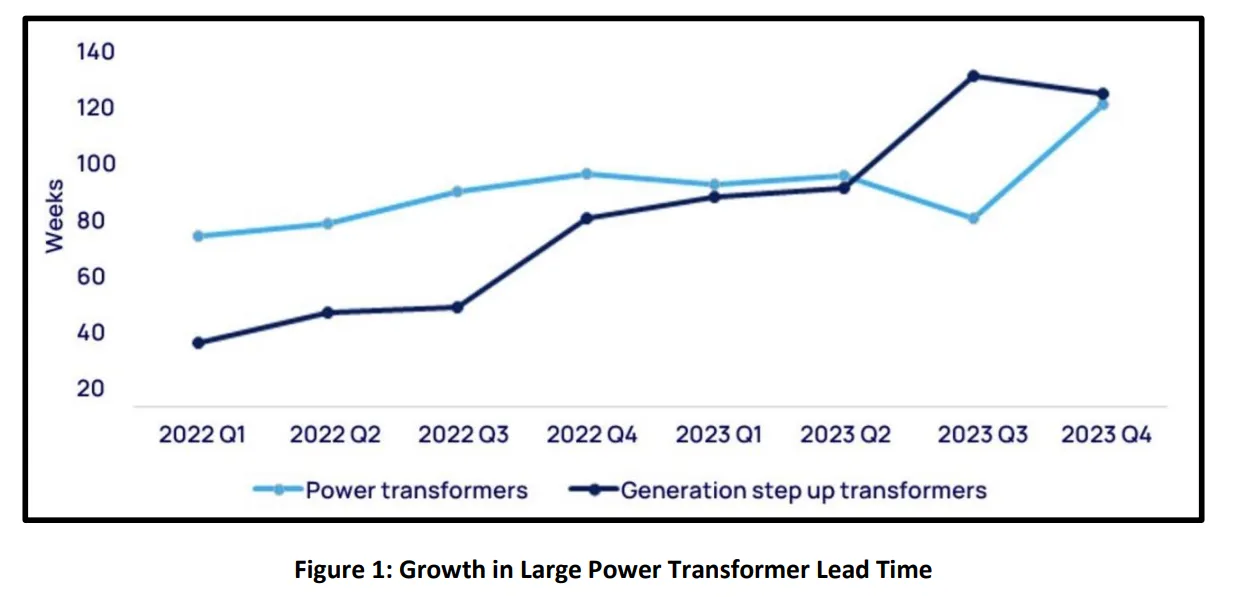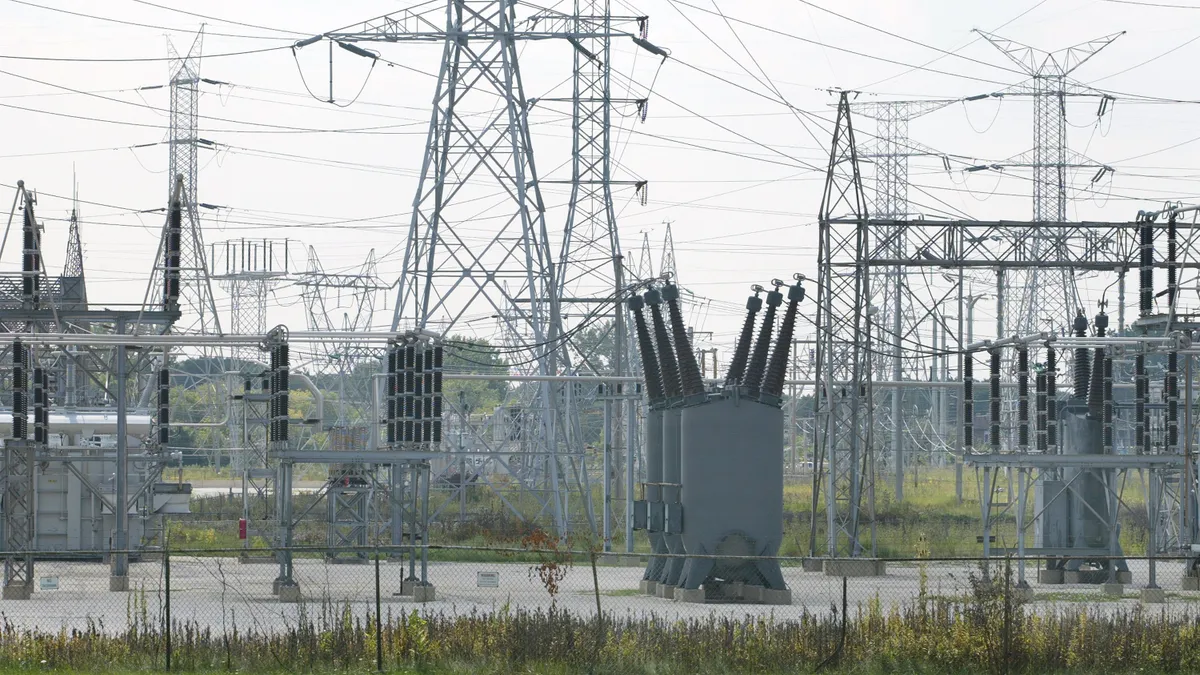Dive Brief:
- The federal government should establish a “strategic virtual reserve” of electric transformers to ensure challenges surrounding U.S. manufacturing capacity of the critical grid components do not slow electrification efforts or necessary replacements, the president’s National Infrastructure Advisory Council said in a report that was finalized last week. The virtual reserve would establish the government as a buyer of last resort if domestic manufacturers experienced a slowdown in orders.
- The lead time for utilities to procure new transformers has more than doubled to 120 weeks or more in recent years, depending on the size and complexity of the equipment, according to the report. Growing energy demand, workforce shortages and a dearth of domestic production capacity are all contributing factors, say experts.
- The NIAC report also calls for driving production increases through workforce partnerships between industry and educational institutions, the use of long-term contracts between transformer suppliers and buyers, and federal tax credits, grants, accelerated depreciation and other incentives.
Dive Insight:
Lead times to procure new transformers have “plateaued” but growing electricity demand from data centers could stretch them again, said Peter Ferrell, director of government relations for the National Electrical Manufacturers Association.
NEMA was a member of the NIAC subcommittee which authored the report.
The report, citing Wood Mackenzie data, says transformer procurement lead times have risen from around 50 weeks in 2021 to 120 weeks on average this year — though for the largest transformers, procurement times can reach 210 weeks.
“You could see the situation worsen ... because you’re adding a new demand element to the equation,” Ferrell said. “When we started talking about the transformer shortage ... we weren't talking about data centers, and we weren't talking about issues like [artificial intelligence] at scale.”
Electricity consumption from data centers could double to more than 9% of total U.S. generation by 2030, according to the Electric Power Research Institute.

NIAC, composed of senior industry leaders and state and local government officials, conducts studies on physical and cyber risks to critical infrastructure, and issues recommended solutions at the president’s request. The Biden administration invoked the Defense Production Act in 2022 to try to address the transformer shortage and its potential to slow electrification efforts.
The strategic reserve envisioned in NIAC’s report would not be a physical reserve, but instead is “an economic tool to provide long-term economic certainty, within various parameters that are set, that would give manufacturers the confidence to expand capacity or make certain investments in the transformer supply chain ... [and] ensure that those assets aren't stranded,” Ferrell said.
“The Federal government would step in as buyer of last resort if domestic manufacturers experienced a slowdown in orders that would result in production below predetermined levels,” the report said, similar to U.S. Department of Agriculture commodity price supports.
“The idea of the reserve is to help provide short- to medium-term certainty around the production of these products,” Ferrell said.
In the event the federal government did procure transformers, it would then work with the private sector to “determine a suitable reserve drawdown to alleviate shortages,” according to the report. “The virtual reserve, like all stockpiles, would therefore dampen the historical boom/bust cycle of transformer manufacturers and could help improve manufacturing capacity utilization over the cycles. It is likely that any government sales of transformers would occur in periods when market prices are high.”
The report also noted that while its emphasis is on large power and distribution transformers, some of the recommendations also apply to other critical grid components including conduit, smart meters, switchgear, and high voltage circuit breakers.
“More domestic or diversified production of this equipment is also needed,” the report concluded.
Manufacturers also hope to see the federal government provide about $1.2 billion to expand production, Ferrell said. The NIAC report recommended the U.S. Department of Energy coordinate a task force to assess the financial support needed to incentivize more domestic production.
Funding to expand domestic production of transformers had been included in the Senate Energy and Water Development Appropriations bill that that was pulled before the August recess, Ferrell said. “Just given the politics around government funding ... this might become a FY26 request.”
“But despite all the pressure around the government appropriations process, there is this understanding on both sides of the aisle that this is an issue that isn't going away anytime soon, and that Congress or government generally could be a partner,” he added.














